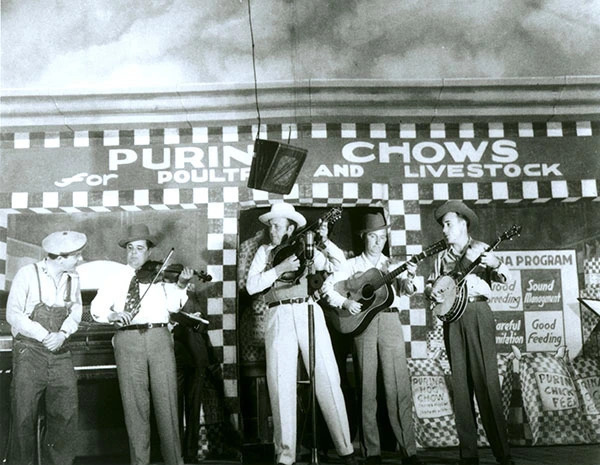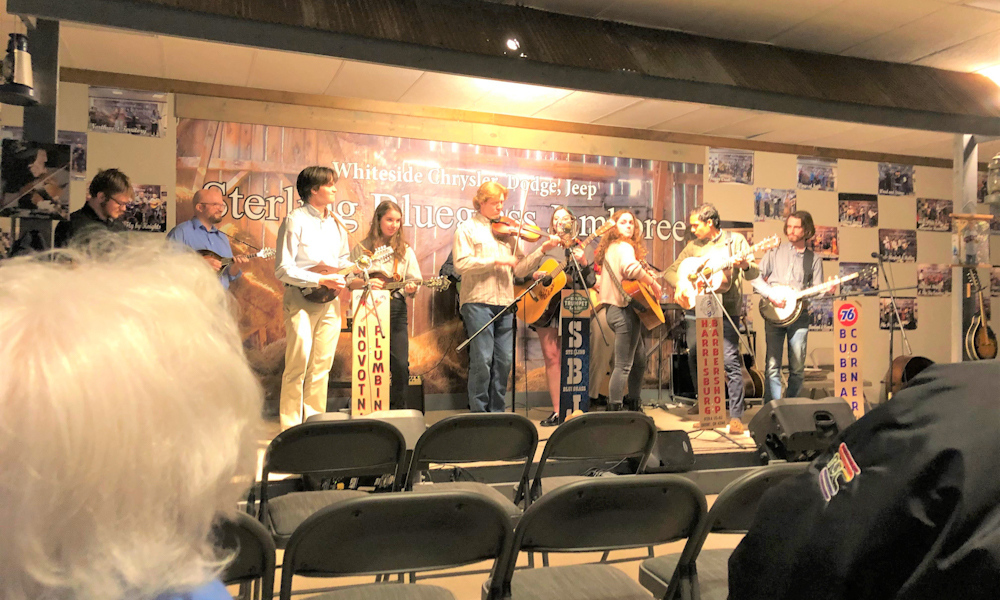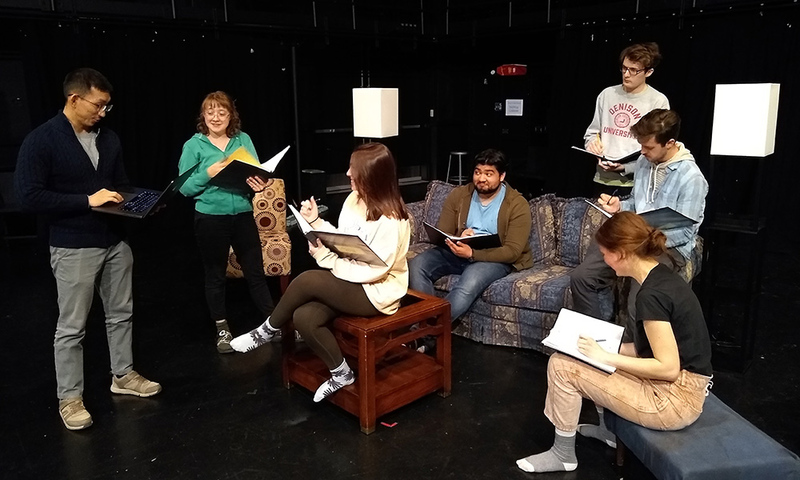If you’re a member of the Denison community, chances are you’re familiar with the driving, high lonesome sound of American bluegrass music. When you close your eyes and listen to it, what do you see? If you’re anything like me when I first arrived at Denison as a student in 2013, you see seemingly timeless images of misty mountains or ramshackle hillside cabins in Appalachia.
But after four years of studying the history of bluegrass music for my doctoral dissertation, the images I see in my mind’s eye are of radio stations, bars, and community halls in places likes Columbus, Chicago, and Dayton in the mid-twentieth century.
Much more of the history of bluegrass music happened in urban spaces than we tend to assume. How, then, did the former set of rural imagery come to dominate our cultural understanding of bluegrass music? In short, the earliest bluegrass musicians of the 1940s created the music in response to the needs of a group of people navigating movement between rural and urban lives. Only later was the music presented implicitly as a totally “authentic” product of rural Appalachia.
You may be surprised to learn that bluegrass had similar historical trajectory to that of the blues and gospel. While all these genres can locate roots in the American South, they were all fundamentally transformed through a twentieth-century migration of southerners to industrial centers in the North.
For example, Bill Monroe, popularly remembered as the “father of bluegrass,” moved from rural western Kentucky to the suburbs of Chicago for factory work in the late 1920s. There, he pursued a music career with his brother Charlie. Though they weren’t yet playing what we would call bluegrass, the venue where Monroe developed his musical ideas is crucial to understanding what bluegrass meant to its first audience.
The Monroe Brothers performed on the WLS National Barn Dance (the direct predecessor of the Grand Ole Opry), a nationally syndicated variety radio show that allowed white southern migrants to formulate a group identity based on their regional origin, class, and race.
1920 was the first year that the census recorded more people living in urban areas than rural ones, a trend that continued steadily over the subsequent decades. This means that in the heyday of the National Barn Dance, people all over the country were actively making the often-uneasy transition from rural to urban life.
The music and comedy presented on radio barn dances mixed rural nostalgia and urban sophistication. The comedy was usually self-satirical, and the lyrics of music like Monroe’s mixed rural nostalgic and pop subject matter, while the music built on the Appalachian string band sound with added progressive musical elements from other genres. This variety mixture that appealed to this group of migrating southerners was something Monroe carried with him as he developed bluegrass in the 1940s.
Looking back at the work of musicians like Monroe and his contemporaries who first made bluegrass, it’s the progressive musical elements juxtaposed with the nostalgic that are easy to miss.
We hear right away that they sing of abandoned homes and loved ones left behind, the elements that produce those pastoral images in our minds. But what we often miss is bluegrass as a modernist abstraction of Appalachian stringband music—pitches pushed higher, an increase in counterpoint, and tempos ramped up too fast for the dancing that dominated popular music culture of the time—heightened elements which Robert Cantwell calls “caricature without ridicule.”
Even at the time, the progressive musical elements weren’t easy for all to see. What’s in the bluegrass sound is what’s in the blare of Gillespie’s trumpet or the splatter of Pollack’s paint: an artistic manifestation of the inarticulable uncertainty of living in modernity.
By the late 1950s, new audiences for bluegrass music had started to show interest as a result of the folk revival. Though bluegrass wasn’t folk music in the sense that it was an “authentic” purely rural product, it began to be mistaken for one when looked at without an awareness of the context it grew out of.
Though bluegrass gained more visibility and brought more commercial success for its creators, the new audience proved to be a problem for bluegrass musicians. For example, even though the music epitomized “caricature without ridicule,” Monroe and his contemporaries showcased bluegrass music alongside rural self-satirical comedy that utilized to different ends the same elements as the derogatory mainstream “hillbilly” comedy of the day (blackened teeth, overalls, and the like). All were elements used to produce caricature with ridicule.
In other words, the viewers of an early bluegrass concert who saw their own experience reflected in the evening’s entertainment accessed a different level of meaning than those who didn’t.
While this comedy provided an outlet for self-knowledge for white southern migrants, for the urban folk enthusiast who lacked an understanding of that experience, the comedy could be written off as unimportant, or far worse, they could apply the folk revival currency of authenticity and view the self-satire as the “real” performer.
These misunderstandings were enough of an issue that costumed comedians ceased to be a part of bluegrass performances by the end of the 1960s.
The urban folk enthusiasts who perceived only bluegrass’ nostalgic sheen went on to produce much of the accessible writing on bluegrass music, shaping public interpretation.
Though many went on to embed themselves in the continued production of bluegrass music and develop a deep understanding of its many cultural meanings in the process, much of bluegrass’ early social purpose for its initial audiences has dropped out of the public’s understanding of the genre.
The next time you hear bluegrass music, I hope you don’t hear an “old as the hills” music preserved in amber, but one created and continuing to be shaped by its historical context.
Today, the mixture of nostalgic and modern aesthetics that accompanied mid-twentieth bluegrass has become a nostalgic aesthetic in itself, as evidenced by the stage decoration of this recent American Roots Ensemble performance at the Sterling Bluegrass Jamboree in Mt. Sterling, Ohio. The Denison students perform behind microphones adorned with vertical placards featuring the Jamboree’s local business sponsors, the centrality of sponsors on the stage space reminiscent of the previous photograph. A visual contrast of regional nostalgia is the proscenium arch surrounding the student performers that mimics a rusted-out tin roof of a cabin front porch.




